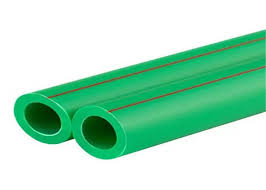Sep . 17, 2024 13:21 Back to list
HDPE Reducing Coupling - High-Density Polyethylene Couplings for Efficient Piping Solutions
Understanding HDPE Reducing Coupling Products
High-Density Polyethylene (HDPE) reducing couplings are essential components in modern plumbing and piping systems. Widely recognized for their durability and resistance to a variety of chemicals, these couplings play a critical role in various applications, including irrigation, municipal water systems, and industrial projects.
What is HDPE?
HDPE is a polymer made from petroleum, known for its high strength-to-density ratio. It is widely used in the production of pipes, containers, and plastic goods due to its excellent qualities such as resistance to impact, UV radiation, and chemical deterioration. Given its versatile properties, HDPE is favored in industries requiring robust piping solutions.
Understanding Reducing Couplings
A reducing coupling is a fitting that connects two pipes of different diameters. This feature is particularly useful when transitioning from a larger pipe to a smaller one, ensuring a seamless flow of fluids while minimizing turbulence. The ability to adapt to different sizes makes reducing couplings invaluable in various systems, allowing for efficient management of fluid dynamics.
Benefits of HDPE Reducing Couplings
hdpe reducing coupling product

2. Flexibility and Weight HDPE is lightweight and flexible, making installations easier and less labor-intensive. This quality is especially beneficial in environments where heavy materials can pose challenges.
3. Chemical Resistance These couplings are resistant to a wide range of chemicals, making them suitable for transporting aggressive substances without the risk of degradation.
4. Cost-Effectiveness Although the initial investment may be comparable to other materials, the durability and low maintenance requirements of HDPE reducing couplings often lead to lower lifetime costs.
Applications in Various Industries
HDPE reducing couplings find applications across multiple sectors. In agriculture, they are widely used for irrigation systems, ensuring efficient water distribution. Municipal water and wastewater systems also benefit from such couplings, which facilitate a reliable connection between pipes of varying sizes. Additionally, in industrial settings, these couplings can handle the transport of chemicals and fluids while maintaining system integrity.
Conclusion
HDPE reducing couplings are indispensable components in contemporary piping systems. Their unique properties—such as corrosion resistance, flexibility, and cost-effectiveness—make them an appealing choice for a multitude of applications. As industries continue to seek reliable solutions for fluid management, HDPE reducing couplings will remain at the forefront of piping technology, ensuring efficiency and longevity in various systems. Investing in these components is an investment in quality and reliability, crucial for successful operational outcomes.
-
High-Quality PVC Borehole Pipes Durable & Versatile Pipe Solutions
NewsJul.08,2025
-
High-Quality PVC Perforated Pipes for Efficient Drainage Leading Manufacturers & Factories
NewsJul.08,2025
-
High-Quality PVC Borehole Pipes Durable Pipe Solutions by Leading Manufacturer
NewsJul.08,2025
-
High-Quality PVC Borehole Pipes Reliable PVC Pipe Manufacturer Solutions
NewsJul.07,2025
-
High-Quality UPVC Drain Pipes Durable HDPE & Drain Pipe Solutions
NewsJul.07,2025
-
High-Quality Conduit Pipes & HDPE Conduit Fittings Manufacturer Reliable Factory Supply
NewsJul.06,2025

